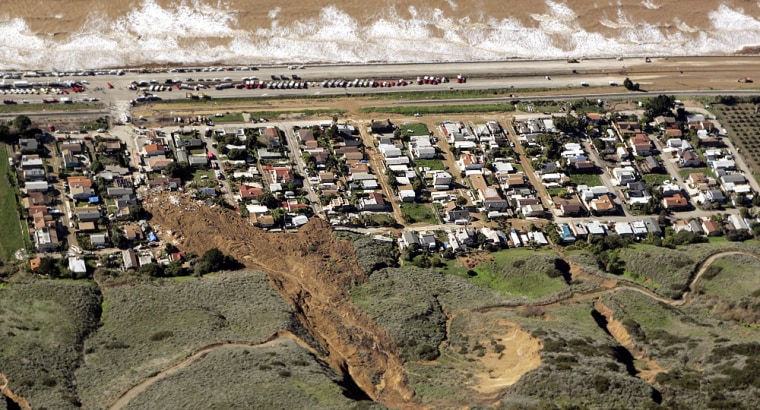More than half of all Americans now live on or near a coast, a major evacuation worry in case of hurricanes, tsunamis or other natural disasters.
One possible answer: vertical evacuations that could send people fleeing upward in high-rise buildings rather than away from a stormy coast.
Coastal growth also poses environmental and economic challenges to local governments, the National Oceanic and Atmospheric Administration said Tuesday.
Some 153 million people live in coastal counties, an increase of 33 million since 1980. An additional 12 million are expected in the next decade.
More people, more problems
Whether it’s tsunamis on the West Coast, hurricanes on the Atlantic and Gulf coasts, or winter storms on the Great Lakes, rising populations complicate evacuations and make emergency response more complex.
Road construction, improved emergency communication and better understanding of population and transportation patterns are all crucial, officials said.
Vertical evacuation — moving people upstairs in taller structures — is a possibility in areas like those at risk of tsunamis, especially on the West Coast, said Richard Spaniard, director of Noah's National Ocean Service.
Going upstairs in a well-constructed building can be as effective as getting on the road and heading inland, Spaniard said at a briefing.
Vertical evacuation has also been proposed in areas such as New Orleans where hurricanes or floods could threaten large urban areas with limited evacuation opportunities.
Paying attention to tsunamis
While tsunamis have drawn little public concern in the United States in the past, the December devastation in Asia has changed that.
And these waves are a hazard in some U.S. areas, especially in the West where a 1964 tsunami damaged much of the California coast. Crescent City was hardest hit with a 20-foot wave killing 11 people and wrecking half the city’s waterfront business district. Hilo, in Hawaii, has also suffered serious tsunami damage.
The better-known threat to Eastern and Gulf coastal areas involves hurricanes. Just last year hurricanes Charley, Frances, Ivan and Jeanne took turns battering Florida and other states, causing 152 deaths and billions of dollars in damage.
The new population data are likely to be used locally in zoning decisions, Spaniard said, such as whether to allow single-family homes or larger condominiums to be built in a particular area.
Tony , executive director of the Coastal States Organization, said the expected growth will increase conflicts and put a greater burden on coastal management programs.
The report, an update of one done a decade ago, considers a county coastal if it is on a coast or at least 15 percent of the county’s land area is in a coastal watershed. That includes 673 counties, some of them not directly on a coast.
Retirement-age population growing
During the next two decades these areas will see a growing proportion of retirement-age Americans, said Thomas Collation, one of the report authors.
Spaniard said both growth and changes in the makeup of the coastal residents mean changes in the economy of these areas.
Kristen Cosset, a co-author of the study, said that while coastal counties include 53 percent of the population and 52 percent of housing they comprise just 17 percent of the nation’s land area.
Other findings of the study include the following:
- Coastal counties average 300 persons per square mile, compared with the national average of 98.
- More than 1,540 permits for construction of single-family homes are issued in coastal counties every day.
- Many homes in coastal areas are seasonal, 2.1 million as of 2000. Florida has the most, followed by Michigan, California and New York.
- Between 1980 and 2003 Florida had the largest percentage increase in population in coastal counties, 75 percent, followed by Alaska, Washington and Texas. In terms of total population growth in that period, California led with 9.9 million, followed by Florida, Texas and Washington.
- Between 1980 and 2003, people between 35 and 54 years old increased from 21 percent of coastal residents to 30 percent, while the proportion aged 18 to 24 fell from 13 percent to 9 percent.
- Median household income in coastal states is 17 percent higher than in states.
